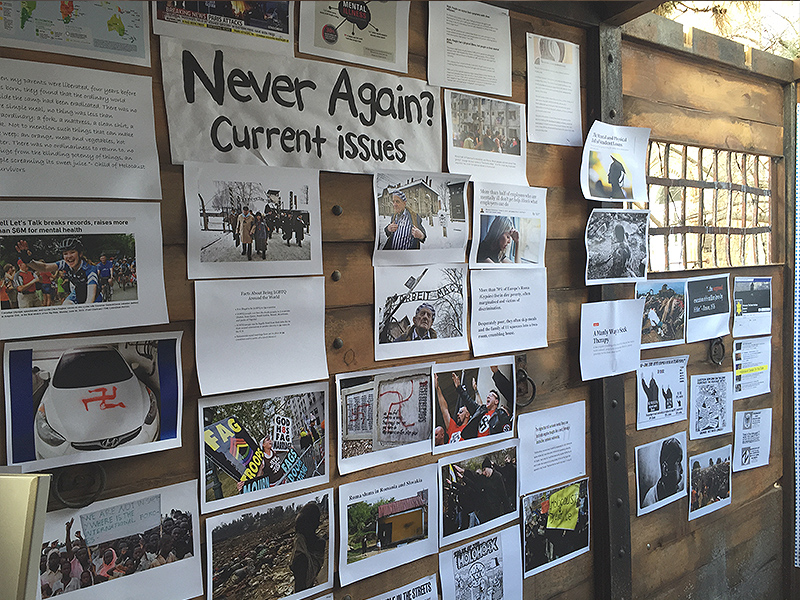Eight months ago, I was struck with an outlandish idea to bring a cattle car to the University of Guelph campus. As if I were world-famous or wealthy beyond belief, or that I actually possessed the resources and connections that would enable me to pull it off. The reality, though, is that I had none of those things – just a dream to create change in the world and an unswayable drive to make it happen.
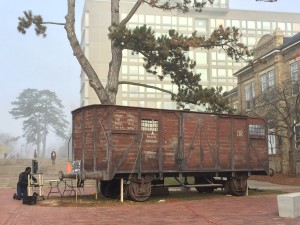
The epiphany shook me like the flash of a light bulb and it stayed. This idea could actually work. I was sure that it was going to bring students through its doors and touch their hearts. I knew that this exhibit could pass on the universal messages of the Holocaust long after the cattle car was removed from campus and I was willing to fight for this dream to become a reality.
I dedicated countless time and efforts to this idea. I wouldn’t give up until I watched it roll onto campus. I endured tremendously stressful glitches in the shipping process, which drove me to tears. Ironically, I thought back to March of the Living 2015, when the idea first became lodged in my mind. This was the very first time that I realized the outlandish aspects of it all.
Brodie Marks (a fellow student) was my lifeline during this process. When stress or sadness overwhelmed me, she was there. When I was unavailable, she stepped in without hesitation. She was by my side every step of the way. She believed in our capabilities and our program and she not once allowed me to forget it.
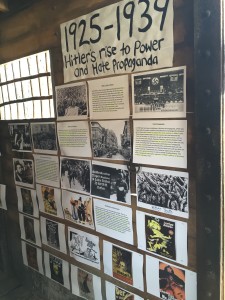
The cattle car was placed in the centre of the University of Guelph campus. We lined the walls with pictures and words describing the unimaginable atrocities that took place during the Holocaust. Each wall represented a different era. Therefore, as you progressed through the cattle car, so did the war, through time.
Beginning with Hitler’s rise to power and hate propaganda that laid the foundation for intolerance in society, it moved into the ghettos and mass shootings – children starving on the streets, parents unemployed, spirits beginning to break. Next was the concentration camps – corpses, crematoriums, gas chambers. Shocking images that shook students to tears as they stared in astonishment. Some have learned bits and pieces of this history prior. Some have never heard the word ‘Holocaust.’ All exited the cattle car changed, infused with appreciation and purpose.
Shoes were aligned in rows, representing the closeness that victims stood to each other for days on end in fear. We wanted the students to visualize the sheer number of innocent men, women and children that perished. Therefore, we covered an entire wall in little figures, colour-coded according to the group that was targeted, representing in total on that wall, 11 million innocents that were murdered. Each figure had a family – a mother, a father, a sibling. Each one had a life, a purpose, hopes and dreams. Each one could have made the world a better place and now they have been wiped into a figment of history, a figure on the wall.
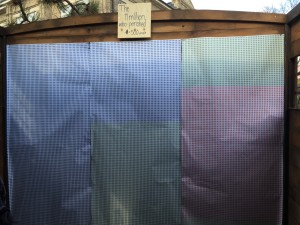
We need to ensure that their memory remains alive. Every breath that I take is for those who no longer breathe. Every deed that I perform is in honour of those whose lives were cut short. They dreamed of a future in which differences are cherished and human beings are respected. I will make that dream a reality.
The final wall of the exhibit was not history at all, but current events – shocking images that show how intolerance of the past exists today. These are the issues that we must focus our energy on eliminating. In this way we will ensure: Never Again.
The week concluded with the images inside the exhibit coming to life as Holocaust survivor Hedy Bohm painted a picture of her devastating experiences during the Shoah in front of 1,100 listeners. She described the atrocities, the hunger, the pain, and the hopelessness, and also how she survived, believing through it all that humanity is good at its core, and never losing hope.
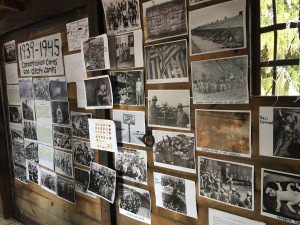
As the organizers of this Holocaust Education Week program, we never could have anticipated the astounding impact that it would create. Endless feedback on social media and from students that we had never met before demonstrated the extent of its impact. The display has created unprecedented interest in the topic. People want to learn more about the Holocaust and what it means to us today.
I am in awe at all that we, as the University of Guelph Hillel, have accomplished this Holocaust Education Week, touching the souls of almost 3,000 individuals. I have no doubt that these students, infused with purpose, will go on to take even one step forward in breeding tolerance. Together, we will make the world a better place in the memory of those who perished.
Jordana Lebowitz is a student at the University of Guelph. All photos courtesy
